The Dunwich Horror (1972). Art by Victor Valla.
El horror de Dunwich y otros relatos is the last of the books I was working on earlier this year for Spanish publisher Editorial Alma. This was a more stimulating Lovecraft collection to work on than the previous two-story volume since three of the stories were ones I hadn’t dealt with before. The fourth story, The Dunwich Horror, I partly illustrated back in 1988/89, and I took the liberty of reusing the best of that set of pages showing Wilbur Whateley’s messy demise. This picture has been reprinted a few times elsewhere so I was reluctant to recycle it again, but the collision of deadlines earlier this year meant that once again I was pressed for time on this book, and having an illustration already done was a great help. It’s taken me 30 years to finally get round to depicting Wilbur’s monstrous brother.
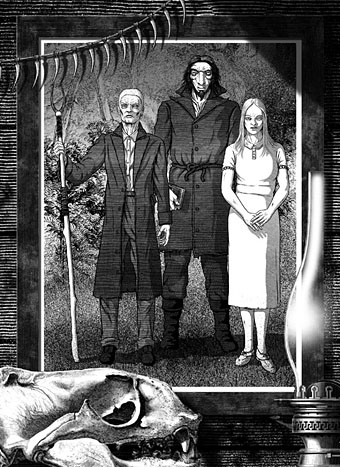
The Dunwich Horror 1.
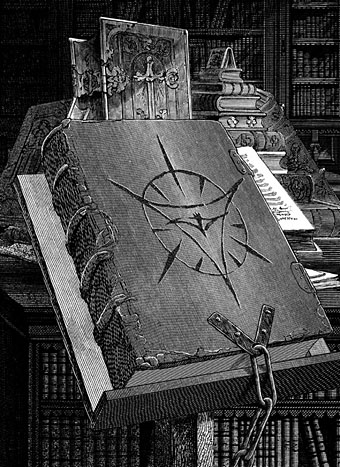
The Dunwich Horror 2.
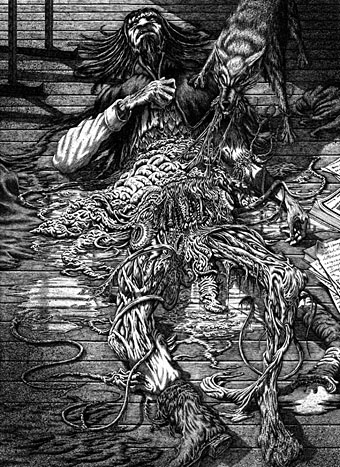
The Dunwich Horror 3.
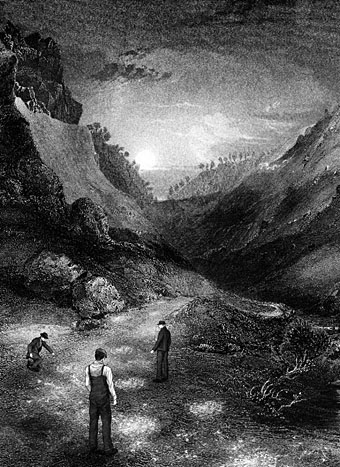
The Dunwich Horror 4.
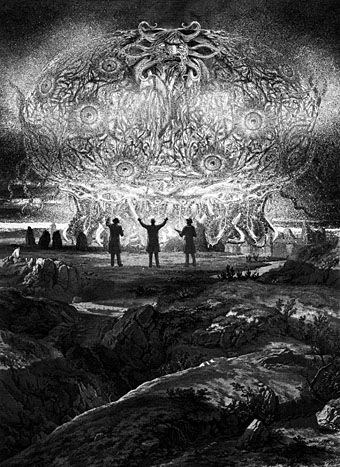
The Dunwich Horror 5.
The Colour Out of Space was the second story of Lovecraft’s that I read after encountering The Moon-Bog in a collection of adult ghost and horror stories reprinted for younger readers. I was only about 12 at the time, and Lovecraft’s meteorite made such an impression that I spent an hour or so feverishly recounting the whole thing to a friend a few days after. The story still strikes me as one of Lovecraft’s very best (he thought so as well), and it’s one I’d always recommend to first-time readers. One of Virgil Finlay’s handful of Lovecraft illustrations shows the climax of the story (see this earlier post) so I avoided that scene in favour of other moments. And before anyone complains, the well seen below isn’t the type that’s described in the story (with a bucket depended from a “sweep” on a long, moveable pole) but this was the best option for the composition.
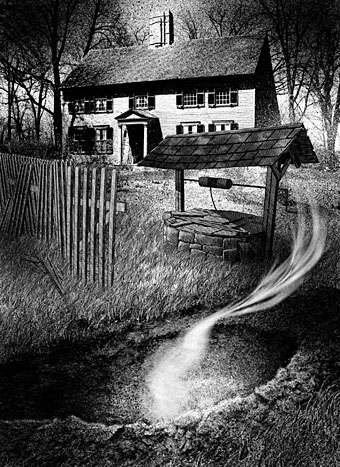
The Colour Out of Space 1.
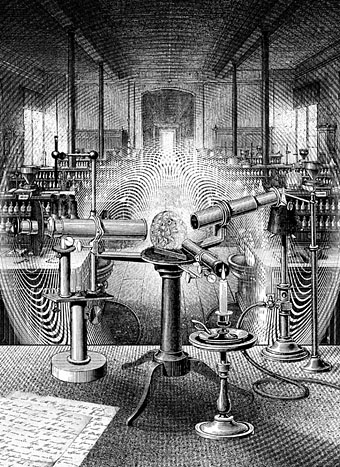
The Colour Out of Space 2.
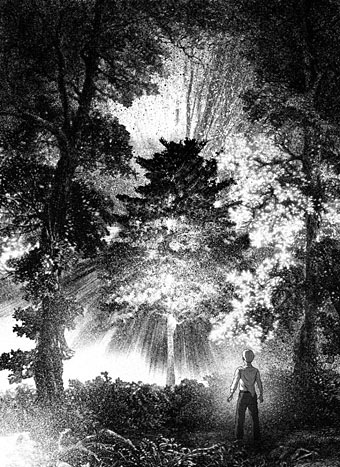
The Colour Out of Space 3.
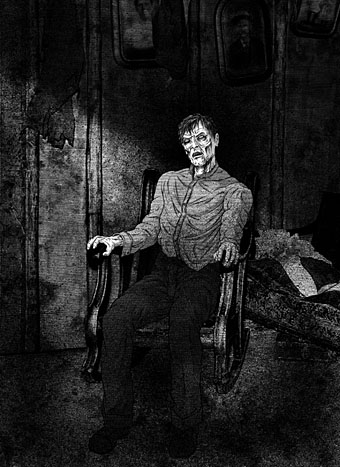
The Colour Out of Space 4.
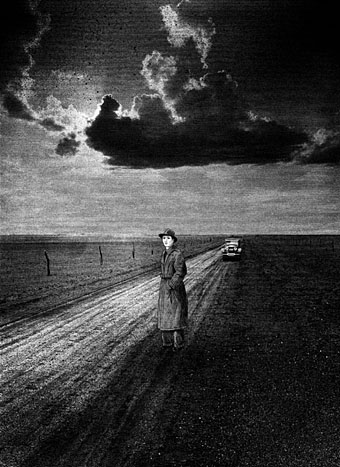
The Colour Out of Space 5.
The Case of Charles Dexter Ward isn’t an easy story to illustrate since it’s less overtly visual than the others, concerning a case of spiritual possession with many of the key events taking place off-stage. Ideally I would have preferred a little more time to work on this one.
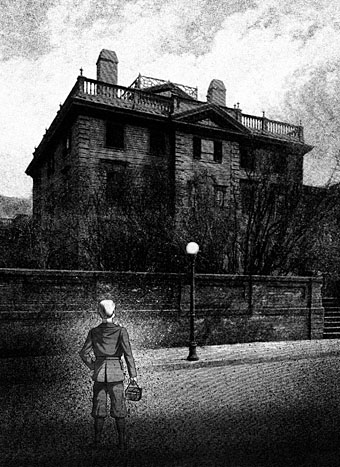
The Case of Charles Dexter Ward 1.
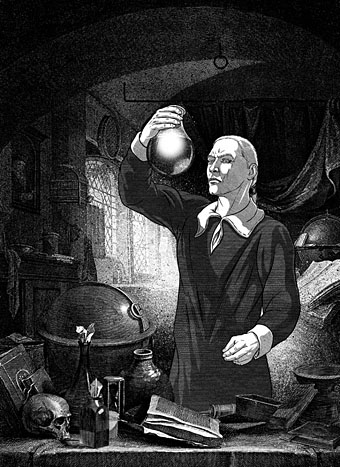
The Case of Charles Dexter Ward 2.
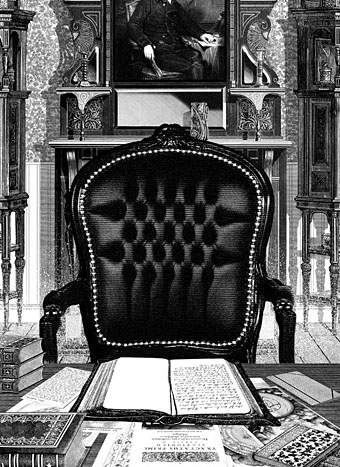
The Case of Charles Dexter Ward 3.
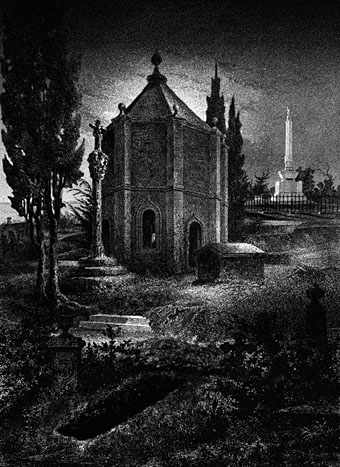
The Case of Charles Dexter Ward 4.
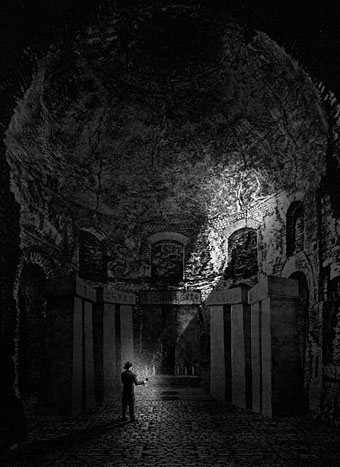
The Case of Charles Dexter Ward 5.
The Whisperer in Darkness, on the other hand, is much more promising with its intelligent alien invaders skulking around the woods of Vermont. The final picture, showing a view of the planet Yuggoth, is the one that inspired this subsequent piece. As usual, all the pictures may be seen at a larger size here.
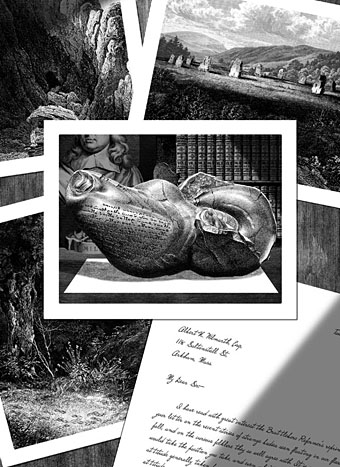
The Whisperer in Darkness 1.
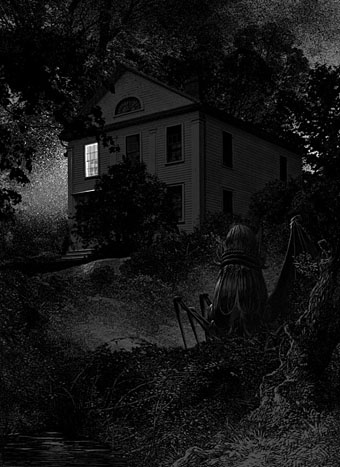
The Whisperer in Darkness 2.
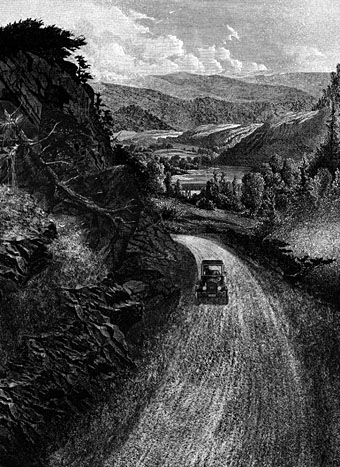
The Whisperer in Darkness 3.
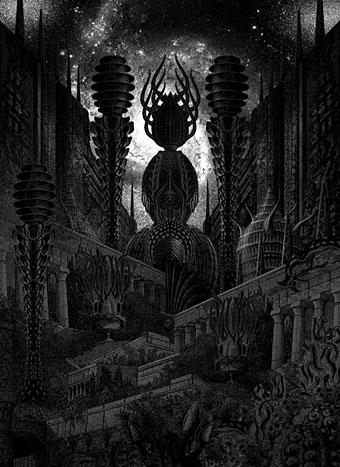
The Whisperer in Darkness 4.
Elsewhere on { feuilleton }
• The Lovecraft archive
Previously on { feuilleton }
• A view over Yuggoth
• Illustrating Sherlock Holmes
• Illustrating Dracula
• Illustrating Frankenstein
• Narraciones extraordinarias by Edgar Allan Poe
• The Thing on the Doorstep
• Die Farbe and The Colour Out of Space

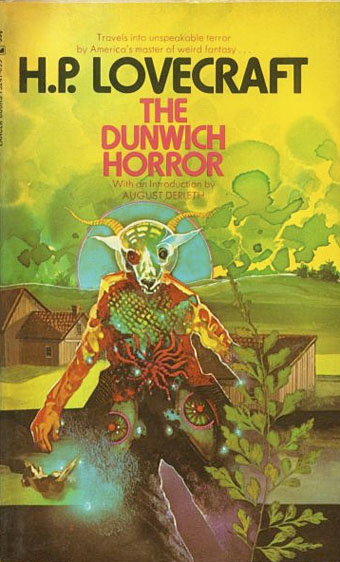
Great work! Interesting to me that you omitted the climax of COLOUR because of Finlay’s famed illustration of that event; there is a scene in Campbell’s LAST REVELATION OF GLA’AKI that I almost painted before Pete von Sholly beat me to it with the last word on the subject. Sometimes, I guess, we recognize that another artist has shown all that needs to be shown. Very happy with your Dunwich Horror, too — I’ve never done him in that sort of spherical form, but knowing what we know about his Dear Old Dad, it sure makes sense.
I’m not sure what you mean by calling WARD a story of “spiritual possession”, though; no doubt that Ward becomes obsessed with his ancestor Joseph Curwen, but there’s no possession involved…
Hi, JB, and thanks. I did consider a view of the well at the end, looking upward while something blasts away into the sky, but in the short time I had to work on these drawings I couldn’t see how I’d do anything that Finlay hadn’t done better aleady.
Re: Charles Dexter Ward, I meant that for most of the story something of the sort is implied–“Why is this young man behaving in such an unusual manner?”–but it’s only at the very end that we find out the truth. Illustration generally deals with the immediate present of the story so the challenge here is to represent an apparent change of personality.
I’ve said it before and I’ll say it again, you are my favorite artist when it come to illustrating Lovecraft. Can’t wait to get my hands on this edition.
Thanks, Daniel. :)
‘Colours…” was my first HPL (in Haining’s ‘The Ghouls’), and remains my favourite. much as I admire the conceptual framework, he could be repetitive, and there are only a handful of his stories that bear repeated visits (‘Call’ ‘Dunwich’ Red Hook and ‘Dagon’ spring to mind)’. Colours is the one I read most often.